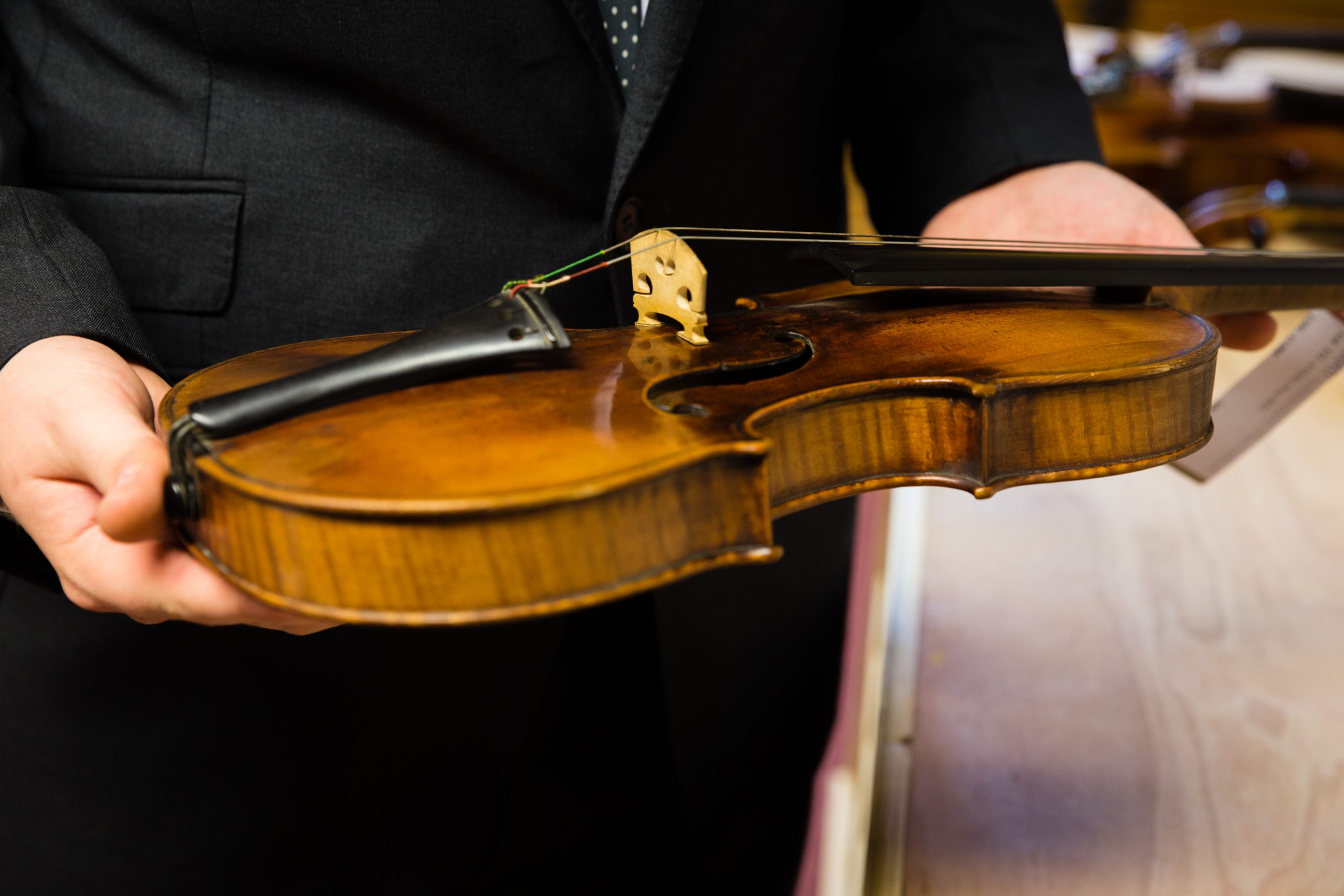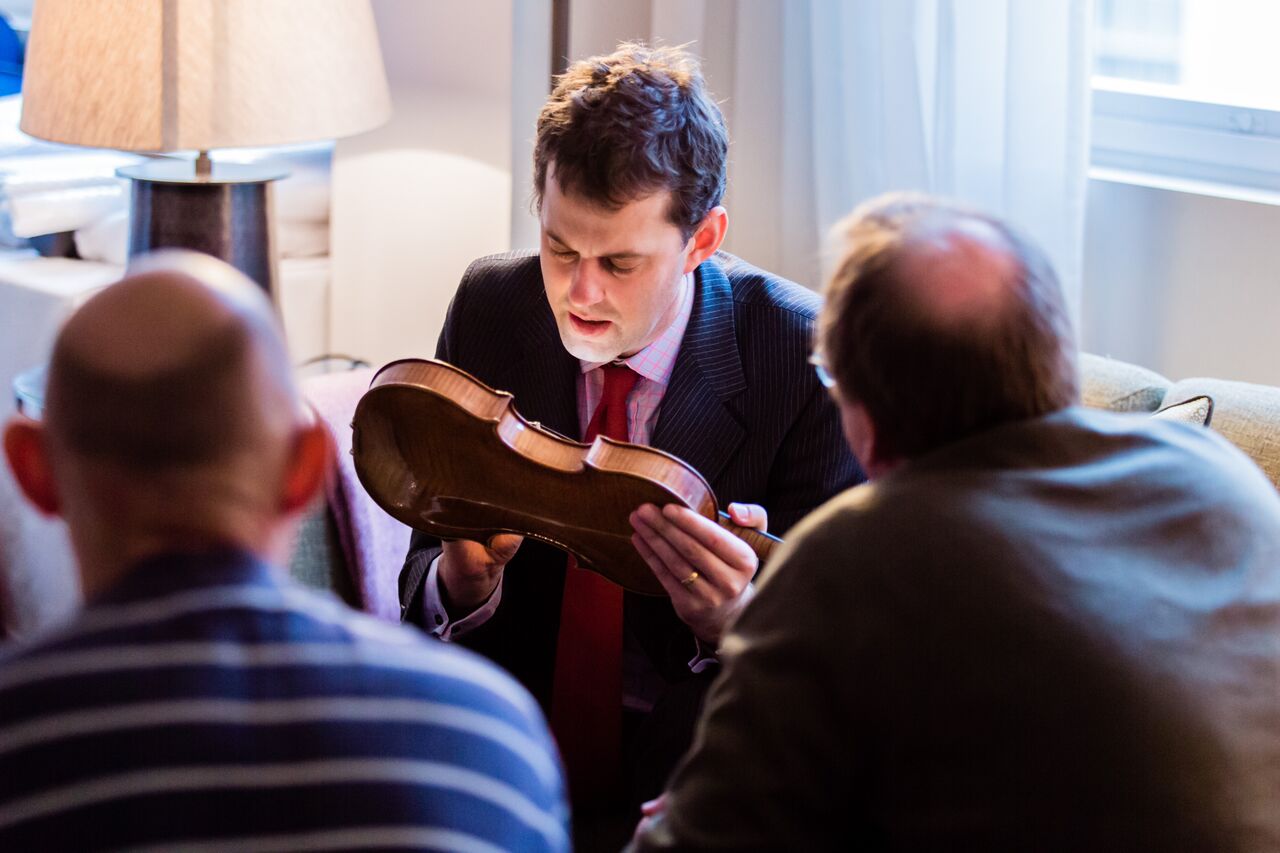Who Made My Violin?
How can I tell who made my violin?
Knowing who made your violin is one of the most important clues to its value. Unfortunately for most instruments you might need the help of an expert, such as our team of specialists at Amati. However, here is a quick run down of what you might be able to do at home.
Violin labels
The label might tell you who made your violin. You can find a label inside the (usually) left hand f-hole in the violin. Not all violins have labels, and you may have to blow away the dust and move the violin under the light to see whether yours does. Many labels are fake, but even fake labels might give an idea of who made the violin. Amati has a few examples of labels in their Makers’ Archive to compare your own against, but be aware that it does not take long to copy a label and put it in a violin – it is something that has been going on for centuries.
Family History
If a past owner was a professional musician, it is quite possible that the instrument is a good one. However, stories about being sold a violin by a musician during the Depression and others similar do not help much. The bottom line is whether the person who originally purchased the violin had both the money and the knowledge to buy well.
Violin Certificates
Some of the best violins come with certificates that tell you who made your violin, these are sold with the violin by the dealer or shop that originally brokered the deal. Sometimes when I talk to clients they become a bit confused and think I am talking about the label inside the violin. I am not. Although certificates can sometimes be wrong, labels are nearly always wrong. Certificates usually come on a smart piece of paper, often with a seal or stamp and might be kept separately to the violin. Some of the best certificates of the 20th Century were those of J. & A. Beare (London), W.E. Hill & Sons (London), Lyon & Healey (Chicago), Rembert Wurlitzer (Manhattan), Bein & Fushi (Chicago).
The Violin Bridge
A quirky clue, but if you look at the bridge (the small pale piece of wood holding the strings up), it may have a name stamped on it. The most common is probably ‘Aubert’ which is a generic stamp, but some might have the name of the shop that originally sold the instrument. This might provide a clue.
In the end, nothing is a substitute for an expert being able to inspect the instrument to tell you who made the violin. We at Amati provide a free online service where people can send in photographs, and valuation days around the UK and the rest of the world, where our specialist can, in person, examine your instrument.
Why do we value instruments for free?
Finding out the origin and value of your instrument is interesting
What happens at a Valuation Day?
The specialists at Amati have spent years travelling around the world looking at violins, viola and cellos. The discovery of a beautiful instrument is always a special event.
Where Can I Get a Violin Valuation?
Amati offer free, no obligation, auction valuations of violins, violas, cellos, and bows.



